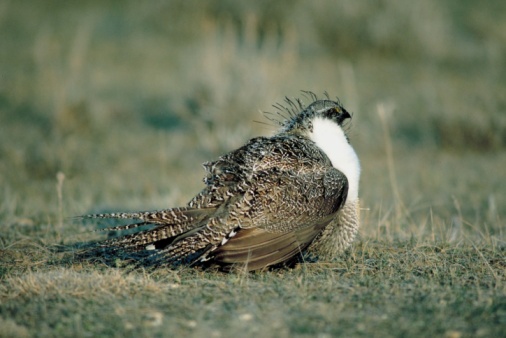 The U.S. Department of the Interior's Fish and Wildlife Service (FWS) says the greater sage grouse population does not require the protection of the Endangered Species Act (ESA).
The U.S. Department of the Interior's Fish and Wildlife Service (FWS) says the greater sage grouse population does not require the protection of the Endangered Species Act (ESA).
The FWS says it reached this determination after evaluating the bird's population status and the collective efforts by the Bureau of Land Management (BLM) and the U.S. Forest Service (USFS), state agencies, private landowners and other partners to conserve its habitat.
Despite long-term population declines, the sage grouse population remains relatively abundant and well-distributed across the species' 173-million acre range. After an analysis of the best available scientific information and taking into account ongoing key conservation efforts and their projected benefits, the FWS has determined the bird does not face the risk of extinction now or in the foreseeable future and, therefore, does not need protection under ESA.
The greater sage grouse is an umbrella species that is emblematic of the health of the sagebrush habitat it shares with more than 350 other kinds of wildlife, including world-class populations of mule deer, elk, pronghorn and golden eagles.
In 2010, the FWS determined that the greater sage grouse warranted ESA protection because of population declines caused by loss and fragmentation of its sagebrush habitat coupled with a lack of regulatory mechanisms to control habitat loss. However, the need to address higher-priority listing actions precluded the FWS from taking action to list the bird. Since that time, actions from state, federal and private partners have added needed protections, increasing certainty that this important habitat will be protected.
Roughly half of the sage grouse's habitat is on federal lands, most of them managed by the BLM and USFS. These tend to be drier uplands where the birds mate, nest and spend fall and winter. Though the federal plans differ in specifics to reflect local landscapes, threats and conservation approaches, their overall goal is to prevent further degradation of the best-remaining sage grouse habitat, minimize disturbance where possible and mitigate unavoidable impacts by protecting and improving similar habitats.
Efforts by private landowners in undertaking voluntary sage grouse conservation have been an important element in the campaign. Though private land programs differ, each works with ranchers, landowners and other partners on long-term agreements to undertake proactive conservation measures that benefit sage grouse.
States in the sage grouse's range have been engaged in this collaborative process, notes the FWS.
For example, Wyoming has been implementing its ‘core area’ strategy for more than five years. Montana has committed to implementing a similar plan that would set standards for managing private and state lands to meet sage grouse conservation goals. Similarly, Oregon has adopted an ‘all lands’ strategy for greater sage grouse conservation. Colorado, Utah, Nevada and Idaho have also developed strategies to improve state and private land management to benefit the sage grouse.



